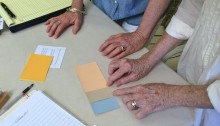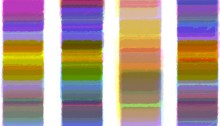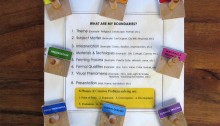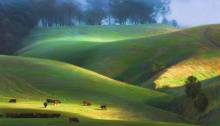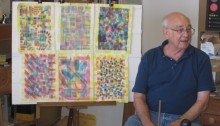Color Relationships 1, Summer 2015 week 3
The third session of the Color Relationships 1 class for Summer 2015 was held on Tuesday, August 11th. We heard from participants about their latest experiences with color, critiqued the last two assignments, and moved on to explore a new facet of color interaction: equal value. This was a favored trick of the Impressionist painters, and when properly utilized can manifest the most beautiful and luminous fields of color. But matching value is much more challenging than it seems! It is truly the mark of a skilled colorist, one who can control their value selection as much as their choice of hues.

